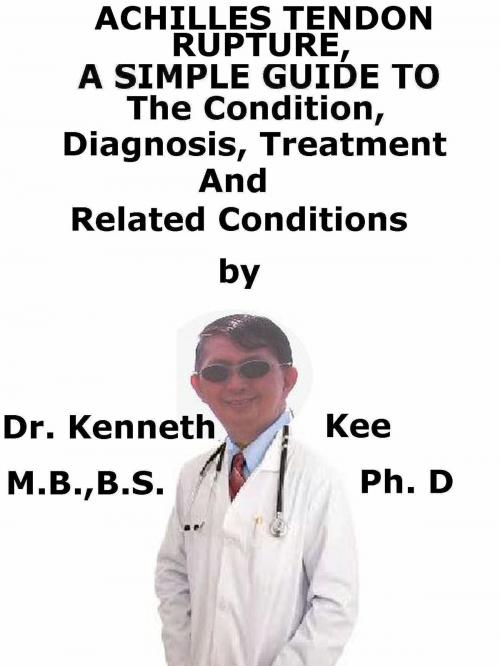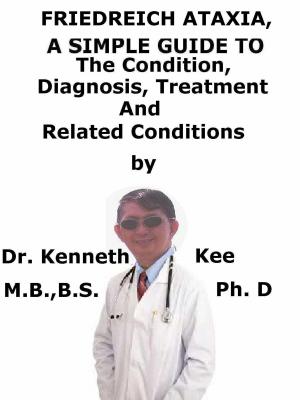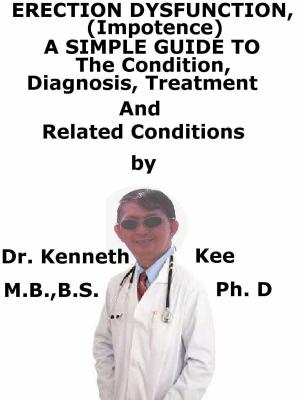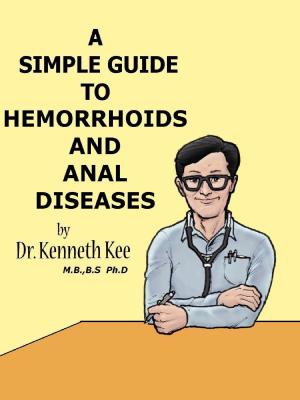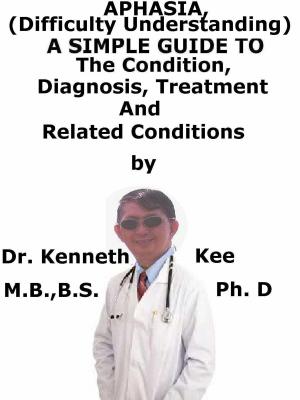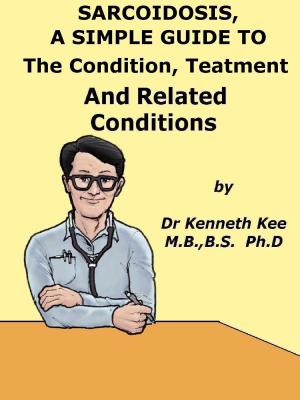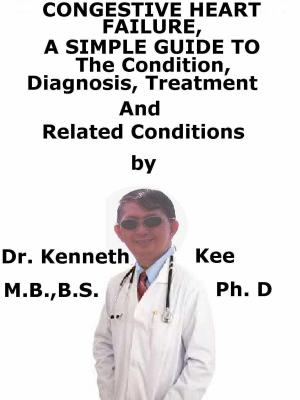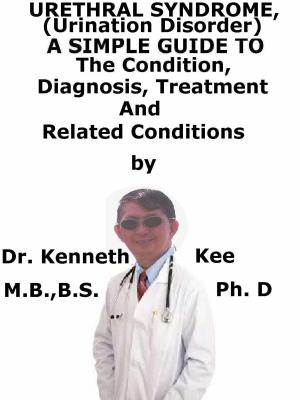Achilles Tendon Rupture, A Simple Guide To The Condition, Diagnosis, Treatment And Related Conditions
Nonfiction, Health & Well Being, Health, Ailments & Diseases, Musculoskeletal, Medical, Specialties, Orthopedics| Author: | Kenneth Kee | ISBN: | 9781370883806 |
| Publisher: | Kenneth Kee | Publication: | April 18, 2017 |
| Imprint: | Smashwords Edition | Language: | English |
| Author: | Kenneth Kee |
| ISBN: | 9781370883806 |
| Publisher: | Kenneth Kee |
| Publication: | April 18, 2017 |
| Imprint: | Smashwords Edition |
| Language: | English |
Achilles tendon rupture is the rupture following inflammation of the Achilles tendon.
Damages to the Achilles tendon are frequent among people of all ages.
Achilles tendon pathologies are rupture and tendonitis.
Other tendon disorders are:
1. Paratenonitis: Featured by paratendon inflammation and thickening, and fibrin adhesions
2. Tendinosis: Featured by intra-substance disarray and degeneration of the tendon
The rupture to the tendon is normally caused by a sudden and immediate plantar-flexion of the ankle or if the foot moves in a direction outside its regular motion.
Other reasons or causes of rupture or Achilles tendon tear are:
1. Excess stress on the tendon brought on in one act or by years of usage,
2. Putting too much effort in a single action after a long rest of the tendon and severe sports.
3. Some antibiotics also weaken the tendons in the body, particularly the Achilles tendon.
4. Patients have injected steroids directly into the Achilles tendon
The rupture is often linked with
Symptoms:
1. Sudden difficulty of movement of the Achilles tendon
2. Swelling of the Achilles tendon involved at the lower leg and heel
3. Local tenderness and gap in the involved Achilles tendon
4. Inability to move the involved foot
Ultrasonography can recognize a ruptured Achilles tendon
Other tests are:
Simmond’s Test
Needle test
Calf Squeeze test
Knee Flexion Test
Heel Raise test
Sphygmomanometer Test
Treatment:
Medical treatment for a patient with an Achilles tendon rupture is rest, control of pain, serial casting, and physiotherapy
rehabilitation to maximize function
Achilles tendon Surgery Types
1. Open Achilles tendon Surgery
The surgeon makes only one incision which is normally about 5 cm long and makes sure that all the torn fibers in the tendon are sutured back together and then left to recover.
Percutaneous Achilles tendon Surgery
In this surgery, a number of small incisions are performed by the surgeon.
These incisions make for quicker healing and also permit the surgeon to see the complete length of the tendon and suture it back together.
The Achilles tendon surgery also is dependent on the type of tear or Achilles tendon rupture of the patient.
The two types of Achilles Tendon Ruptures are:
1. Chronic Tear
A tear is regarded chronic if the muscle is shortened.
It has been weeks or months since the rupture and the patient has still not had it surgically repaired.
In this patient, the most important factors are the distance of separation present and the amount of the gap present between the tendons.
Acute Tear
An Achilles tendon tear is acute if the patient informs a doctor within a couple of weeks of the injury that ruptured his Achilles tendon.
In most acute tear cases, the separation is pretty negligible and the ends of the tendon can be sutured back together.
With the enlargement in the gap, more extreme measures are to be taken.
This can range any thing between using a simple strip of the present injured tendon to using a dissimilar tendon for tendon transfer or discussing with a tissue bank about an Achilles tendon graft.
Tendon Transfers
Tendon transfers are not done widely, as it is performed only when the gap present is very wide.
The tendon used during the transfer is normally the next strongest tendon present in the leg.
This is the flexor hallucis longus, the muscle available next to the big toe.
An Achilles tendon surgery provides the best results only if the procedure is done at the earliest.
TABLE OF CONTENT
Introduction
Chapter 1 Achilles Tendon Rupture
Chapter 2 Causes
Chapter 3 Symptoms
Chapter 4 Diagnosis
Chapter 5 Treatment
Chapter 6 Prognosis
Chapter 7 Achilles Tendonitis
Chapter 8 Plantar Fasciitis
Epilogue
Achilles tendon rupture is the rupture following inflammation of the Achilles tendon.
Damages to the Achilles tendon are frequent among people of all ages.
Achilles tendon pathologies are rupture and tendonitis.
Other tendon disorders are:
1. Paratenonitis: Featured by paratendon inflammation and thickening, and fibrin adhesions
2. Tendinosis: Featured by intra-substance disarray and degeneration of the tendon
The rupture to the tendon is normally caused by a sudden and immediate plantar-flexion of the ankle or if the foot moves in a direction outside its regular motion.
Other reasons or causes of rupture or Achilles tendon tear are:
1. Excess stress on the tendon brought on in one act or by years of usage,
2. Putting too much effort in a single action after a long rest of the tendon and severe sports.
3. Some antibiotics also weaken the tendons in the body, particularly the Achilles tendon.
4. Patients have injected steroids directly into the Achilles tendon
The rupture is often linked with
Symptoms:
1. Sudden difficulty of movement of the Achilles tendon
2. Swelling of the Achilles tendon involved at the lower leg and heel
3. Local tenderness and gap in the involved Achilles tendon
4. Inability to move the involved foot
Ultrasonography can recognize a ruptured Achilles tendon
Other tests are:
Simmond’s Test
Needle test
Calf Squeeze test
Knee Flexion Test
Heel Raise test
Sphygmomanometer Test
Treatment:
Medical treatment for a patient with an Achilles tendon rupture is rest, control of pain, serial casting, and physiotherapy
rehabilitation to maximize function
Achilles tendon Surgery Types
1. Open Achilles tendon Surgery
The surgeon makes only one incision which is normally about 5 cm long and makes sure that all the torn fibers in the tendon are sutured back together and then left to recover.
Percutaneous Achilles tendon Surgery
In this surgery, a number of small incisions are performed by the surgeon.
These incisions make for quicker healing and also permit the surgeon to see the complete length of the tendon and suture it back together.
The Achilles tendon surgery also is dependent on the type of tear or Achilles tendon rupture of the patient.
The two types of Achilles Tendon Ruptures are:
1. Chronic Tear
A tear is regarded chronic if the muscle is shortened.
It has been weeks or months since the rupture and the patient has still not had it surgically repaired.
In this patient, the most important factors are the distance of separation present and the amount of the gap present between the tendons.
Acute Tear
An Achilles tendon tear is acute if the patient informs a doctor within a couple of weeks of the injury that ruptured his Achilles tendon.
In most acute tear cases, the separation is pretty negligible and the ends of the tendon can be sutured back together.
With the enlargement in the gap, more extreme measures are to be taken.
This can range any thing between using a simple strip of the present injured tendon to using a dissimilar tendon for tendon transfer or discussing with a tissue bank about an Achilles tendon graft.
Tendon Transfers
Tendon transfers are not done widely, as it is performed only when the gap present is very wide.
The tendon used during the transfer is normally the next strongest tendon present in the leg.
This is the flexor hallucis longus, the muscle available next to the big toe.
An Achilles tendon surgery provides the best results only if the procedure is done at the earliest.
TABLE OF CONTENT
Introduction
Chapter 1 Achilles Tendon Rupture
Chapter 2 Causes
Chapter 3 Symptoms
Chapter 4 Diagnosis
Chapter 5 Treatment
Chapter 6 Prognosis
Chapter 7 Achilles Tendonitis
Chapter 8 Plantar Fasciitis
Epilogue
